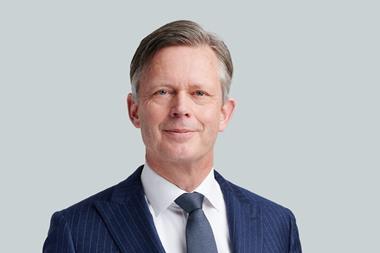SPT, the closed Dutch occupational pension fund for dentists, still considers remaining independent as the best way of looking after the interests of its 6,975 participants and pensioners.
In its annual report, it said it did not expect to liquidate or seek another set up during the next five to 10 years.
The board of the €1.9bn scheme said that costs per participant – despite their decreasing number – would remain relatively low, and that it was confident that it could honour its target of an annual pensions increase of 1.15% in the future.
SPT reported returns of 8.4% in 2016, an outperformance of 0.7 percentage points relative to its benchmark. Since the start of the year, its funding improved by 1.5 percentage points to 111.2%.
The scheme board’s optimism came despite a conflict with the trade association BPVT about its role and responsibilities.
Following a recent court verdict, both parties agreed about the appointment of board members. However, they are still in discussions about BPVT’s exact role.
The escalated dispute also featured in SPT’s annual report, with its supervisory board (RvT) noting that the issue “remained worrying” and that it had already cost “a lot of money and energy”.
The RvT nevertheless concluded that the pension fund “had functioned and performed well and had made progress on all fields of policy last year”.
The scheme’s accountability body (VO), for its part, said: “It was incomprehensible that a couple of board members of the BPVT kept on [rejecting] the advice of an independent mediator.”
“They don’t understand that the suggested change would be to the benefit of participants,” according to the VO, which also described the situation as “worrying”.
The VO referred to the advice provided by pensions lawyer Monica Swalef, who had suggested aligning the BPVT’s statutory right to appoint, suspend and dismiss board members with the Netherlands’ legal code for pension funds.
“The current situation doesn’t lead to a balanced relationship within the pension fund’s governance,” she had argued, according to the VO.
The recommendation, however, had further deteriorated the relationship between the pension fund and the occupational association.
Costs and results
Meanwhile, SPT saw its administration costs per participant increase from €421 to €443, citing not only higher educational costs, but also legal advice for its dispute with the BPVT.
Its asset management costs dropped from 0.17% to 0.13%, while transaction costs fell by three-quarters to 0.02%.
SPT’s low transaction costs were mainly due to passive management of its equity and credit portfolios, which returned 8.4% and 3.8%, respectively.
Its 62% matching portfolio of government bonds and interest rate swaps – meant as an 85% hedge of the interest rate risk in its liabilities – generated 9.2%, thanks to decreasing interest rates last year.
The scheme said the surplus return on its liabilities portfolio was 2.5 percentage points.
SPT has not yet used the one-off option – offered by supervisor DNB – to increase the risk profile of its investments.
Although the board wanted to raise its equity stake by 10 percentage points at the expense of its fixed income holdings, it has put its plan on ice because of objections from both the VO and the BPVT, said Meilof Snijder, the scheme’s chairman.
“Such an adjustment would lead to a better balanced pensions result for older and younger participants,” he argued.
According to Snijder, the three parties will discuss the issue again later this year: “This may result in a risk appetite survey among our participants as the VO wanted.”























No comments yet